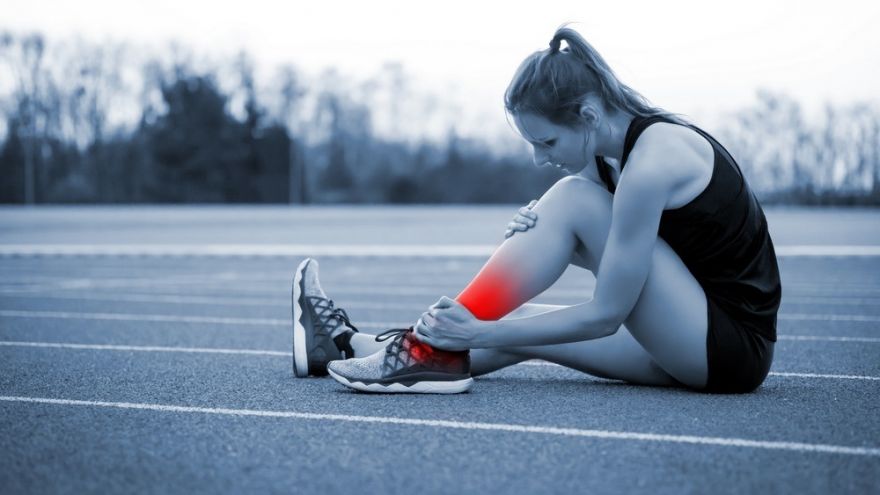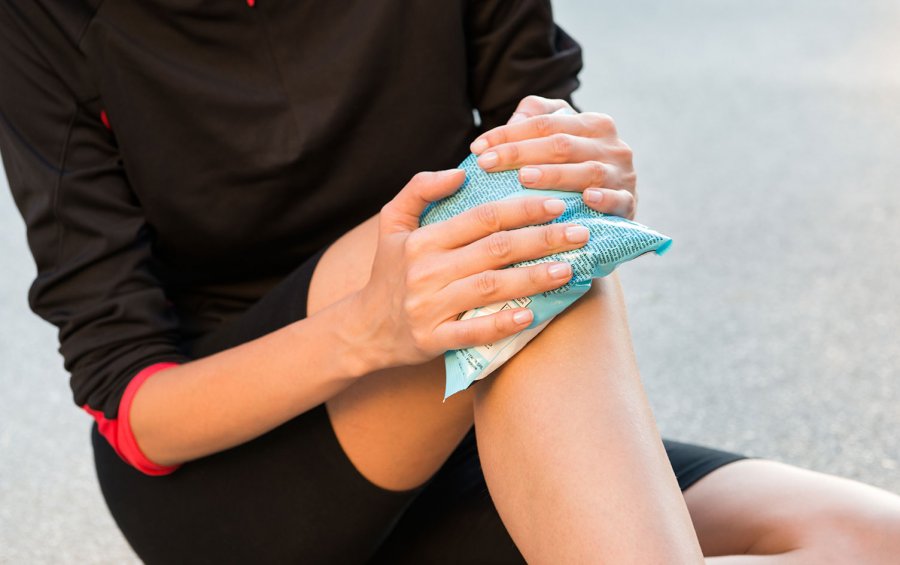Should You Ice or Heat A Running Injury?
 Should You Ice or Heat A Running Injury? www.walkjogrun.net
Should You Ice or Heat A Running Injury? www.walkjogrun.net A running injury can happen to anyone. All it takes is one moment of uneven ground to twist your ankle and you have a sprain. Or days of over-exertion/training and you have back, hip, thigh, leg, ankle, heel, or foot pain. But, how are you supposed to treat these running injuries?
In this article, I will discuss when you should ice an injury and for how long to ice the injury.
Areas of Injury
The most common areas of injury in runners are:
- Knee
- Foot
- Upper leg
- Lower leg
- Lower back
- Ankle
- Hip, pelvis, and groin
Knee injuries are the number one injury that affects runners. It makes up from 7.2% to 50% of injuries for runners. Foot, upper leg, and lower leg injuries make up anywhere from 3.4% to 39.3% of injuries in runners. Lower back, ankle, hip, pelvis, and groin injuries are not as common as the others, but they account for up to 19.1% of run injuries.
After injury
The acronym to remember after you have experienced a running injury is P-R-I-C-E. Price is the long-known acronym R-I-C-E with a P added.

This method is to prevent further injury, decrease pain and swelling, and allow healing. These steps should be followed for the first 48 hours after injury.
✓ P- protect the area
You want to protect the area as a preventative measure to abstain from causing pain and causing more damage to the area that could lead to further injury.
✓ R- rest
Resting allows your body to heal and recuperate so you can get back out there and continue running. You will want to stay off of the area that is injured for at least 48 hours and do not apply any bodyweight to this limb or area.
✓ I- ice
Be sure to ice the injury for 15 to 20 minutes a few times (4-8x) throughout the day. You will want to have the ice wrapped in a towel to create a barrier to protect your skin.
*Do not apply heat to an injury because this could lead to increased swelling and internal bleeding*
✓ C- compression
To compress the area, you will want to apply even pressure with a bandage or wrap that is elastic. The compress helps to decrease the swelling. Remember not to wrap the area too tight because it could result in numbness due to the disruption of blood supply.
✓ E- elevation
Elevating the limb above the heart helps to decrease or prevent swelling.
Some over-the-counter medications that you may take to help with pain and swelling are Acetaminophen, Ibuprofen, Naproxen, and Aspirin. Although inflammation is a part of the healing process, it is important that it is regulated because it can also delay recovery.
Inflammation is the body’s response to your injury. It sends white blood cells to the area to clean up and start the healing process. Inflammation is also what causes swelling, pain, and soreness during the injury.
When to call the doctor
If you are experiencing pain and swelling for 3 days or more, you need to call your Physician or Provider to see what steps you need to take next. You will also need to contact them if you are not able to return to running after a week, are not able to bear weight on your limb, sit up, or complete normal daily tasks.

Also if you start to have signs of an infection which may present as red streaks or redness that starts to spread out from the site of your injury, it’s time to contact your Physician.
They will be able to treat your injury or infection. Or they will refer you to a Physical Therapist, Orthopedist, or get you an item that immobilizes the area to promote healing. And other services they can recommend and order are a massage and an ultrasound.
Injury prevention
I have said it once and I will say it again; prevention is our number one goal. Remember to warm up before a workout or run. This allows your body to prepare for the run.
Also, switch things up! Cross-training allows the muscle groups you use for running to go on vacation while you go swimming, biking, or do yoga. Now let’s add some stretching in the mix to help elongate and release tension from our muscles.
Sources
- , Sprain: First aid, Clinic
- , Sports Injuries, National Institute
- , Home Remedies: First-aid strategy called PRICE, News Platform
- , Injuries in runners; a systematic review on risk factors and sex differences, Medical Journal















